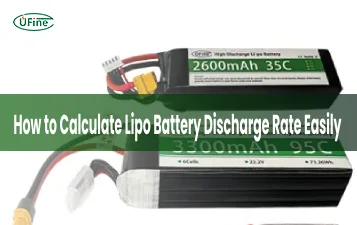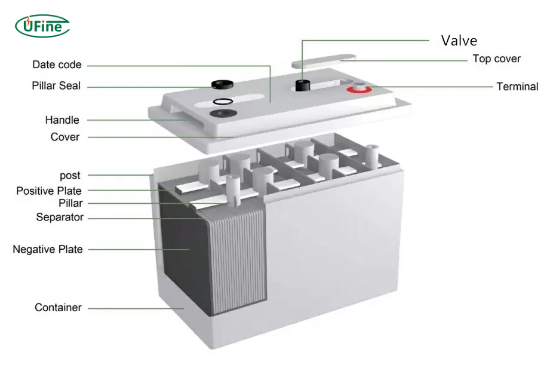Consider buying a deep-cell battery for your RV, solar setup, or marine use. You’re not alone. This type of battery is essential for off-grid living, backup power systems, and mobile energy solutions. But not all deep-cell batteries are created equal. Before investing, you need to ask the right questions to avoid wasting money or ending up with a battery that doesn’t meet your needs.
In this guide, we’ll discuss the 7 most important questions to ask before buying a deep-cell battery. Whether you’re a first-time buyer or upgrading your current system, this article will help you make a more intelligent, longer-lasting choice.
Part 1. What is a deep cell battery and how does it work?
A deep cell battery, often called a deep cycle battery, is designed to deliver a consistent current over a long period. Unlike starter batteries in vehicles that provide a quick burst of power, deep cycle batteries are built to be discharged and recharged repeatedly.
How does it work?
Inside a deep cell battery, chemical reactions produce electricity. These batteries are constructed with thicker plates that can withstand deep discharges — usually up to 50% to 80% of their capacity — without damage. This makes them perfect for applications where long, steady power is needed, such as:
- Solar energy storage systems
- RV batteries
- Marine and boating applications
- Golf carts
- Off-grid homes
- UPS (Uninterruptible Power Supply) systems
Quick Answer: A deep cell battery stores energy and discharges it slowly over time, making it ideal for powering devices and systems that need reliable, long-term energy.
Part 2. What will your deep cell battery be used for?
Choosing the correct deep cell battery starts with identifying its purpose. This determines the type, size, capacity, and chemistry of the battery you’ll need.
Typical uses of deep cell batteries include:
- RV and camper vans: Powering small appliances, lights, and electronics.
- Solar systems: Storing energy solar panels generate for use at night or during outages.
- Boats and marine applications: Running trolling motors, lights, and onboard electronics.
- Off-grid cabins: Providing stable electricity in remote areas.
- Emergency backup power: Keeping essential devices running during blackouts.
- Electric mobility devices: Used in wheelchairs, scooters, and golf carts.
It is crucial to understand your energy requirements, how often you’ll use the battery, and how deeply it will be discharged daily. A daily battery in an off-grid home needs much higher capacity and durability than one used occasionally in an RV.
Tip: Make a list of all devices you plan to power, their wattage, and the number of hours they’ll run per day. This will help you accurately size your battery bank.
Part 3. What type of deep cell battery suits your needs?
There are several types of deep cell batteries, each with pros and cons. Choosing the right one depends on your budget, maintenance preferences, climate, and usage.
1. Flooded Lead Acid (FLA)
- Cheapest option
- Requires regular maintenance (topping off electrolyte levels)
- Needs ventilation (can emit gases)
- Susceptible to spillage
- Lifespan: 300–500 cycles
2. Absorbed Glass Mat (AGM)
- Maintenance-free and spill-proof
- Better vibration resistance
- Faster charging than flooded
- More expensive than FLA
- Lifespan: 500–1,000 cycles
3. Gel Cell Battery
- Uses a gel-like electrolyte
- Excellent for deep discharges
- Sensitive to overcharging (needs special charger)
- Performs well in hot climates
- Lifespan: 500–1,000+ cycles
4. Lithium Iron Phosphate (LiFePO4)
- Lightweight and compact
- Extremely long lifespan (2,000–5,000+ cycles)
- Charges quickly and efficiently
- Higher upfront cost
- Maintenance-free
- Built-in battery management system (BMS)
Recommendation: Go with lithium for long-term savings and low maintenance. AGM offers a solid balance of quality and cost if you’re on a tighter budget.
Part 4. What capacity should your deep cell battery have?
Battery capacity is measured in amp-hours (Ah) and indicates how much energy the battery can store and deliver.
How to calculate your needs:
- List all appliances and devices you’ll use.
- Find their power consumption in watts.
- Multiply watts × hours = watt-hours (Wh) per day.
- Divide Wh by your battery voltage (usually 12V) = Ah required.
Example:
If you use 1,200Wh per day, and your system is 12V:
1,200 ÷ 12 = 100Ah needed per day
Since deep cell batteries last longer when not fully discharged, you should double the capacity: 200Ah or more.
Consider battery bank configurations.
You can connect multiple batteries in parallel (increase Ah) or series (increase voltage). A bank of 6V batteries wired in series-parallel is common for solar systems or large RV setups.
Pro Tip: Always plan for 20–30% extra capacity to account for inefficiencies.
Part 5. How many cycles will a deep cell battery last?
The lifespan of a deep cell battery is measured in charging cycles — one full discharge and recharge.
Average cycle life by type:
- Flooded Lead Acid: 300–500 cycles
- AGM: 500–1,000 cycles
- Gel: 500–1,200 cycles
- Lithium: 2,000–5,000+ cycles
A lithium battery may cost 4x more upfront, but can last 10x longer than a flooded battery. Over time, this means lower cost per cycle and fewer replacements.
Key Insight: Consider total lifespan and cost per cycle, not just upfront cost.
Part 6. How do you charge a deep cell battery properly?
Charging is critical to the performance and durability of any deep cell battery.
Charging best practices:
- Use a smart charger that is compatible with your battery type.
- Avoid overcharging or undercharging.
- Use multi-stage charging (bulk, absorption, float).
- For solar systems, use an MPPT charge controller for maximum efficiency.
- Match charger output to battery capacity. A 100Ah battery should ideally charge at 10–20A.
Warning: Overcharging gel or AGM batteries can reduce lifespan. Lithium batteries need a charger with a built-in BMS or voltage limiter.
Part 7. What is your budget for a deep cell battery?
Your budget will heavily influence your choices. Here’s a rough cost breakdown:
| Battery Type | Price Range (USD) | Lifespan (Cycles) | Cost per Cycle |
|---|---|---|---|
| Flooded Lead Acid | $100–$150 | 300–500 | $0.30–$0.50 |
| AGM | $150–$300 | 500–1,000 | $0.20–$0.40 |
| Gel | $200–$400 | 500–1,200 | $0.17–$0.33 |
| Lithium (LiFePO4) | $500–$1,200+ | 2,000–5,000+ | $0.10–$0.25 |
Smart Tip: Consider long-term value, not just initial cost. A lithium battery may seem expensive, but its cost per cycle is usually the lowest.
Part 8. FAQs About Deep Cell Batteries
Can a deep cell battery be used as a car battery?
No. A deep-cell battery is designed for slow, long-term energy delivery. A car battery, on the other hand, is made to deliver high cranking amps in a short burst to start the engine. Using a deep-cell battery in a car can lead to poor performance and premature failure.
How do I know when my deep cell battery needs replacing?
Look for signs such as:
- Slow charging or not holding a charge
- Reduced runtime
- Swollen or damaged casing
- Corroded terminals
- Warning lights (in systems with BMS)
If your battery regularly drops voltage too quickly or no longer powers devices it once did, it’s time for a replacement.
Can I store a deep cell battery in cold weather?
Yes, but with precautions. Store batteries fully charged in a cool, dry place. Lithium batteries can be damaged if charged below 0°C (32°F), so use a battery heater or insulated box if needed. AGM and gel batteries handle cold better, but still prefer moderate temperatures.
How do I dispose of an old deep cell battery?
Never throw deep cell batteries in the trash. They contain hazardous materials like lead and acid. Take them to:
- Auto parts stores
- Battery recycling centers
- Local hazardous waste drop-off
Most retailers will take your old battery when you buy a new one.
Can I connect different deep cell batteries?
It’s not recommended. Mixing different brands, types, ages, or capacities can cause imbalance, reduced efficiency, and damage. Always use identical batteries when building a battery bank.
Related Tags:
More Articles

LiPo Battery Discharge Rate Guide & Calculation Tips
Understand LiPo battery discharge rates, C-ratings, and how to calculate max current. Essential guide for RC, drones, and electronics users.
High‑Capacity 3S LiPo Batteries: 5000 mAh vs. 10000 mAh
Compare 3S LiPo 5000mAh vs 10000mAh batteries by weight, power, and use. Find the best fit for your drone, RC car, or boat setup.
Top 5 Applications for Small 3S LiPo Batteries
Small 3S LiPo batteries power drones, RC gear, wearables, and robotics with high energy and low weight. Making them ideal for compact electronics projects.
Building and Charging Your Own 3S LiPo Pack: A Step‑by‑Step Guide
Learn how to build, balance, and charge a 3S LiPo battery pack safely at home with this complete DIY guide for hobbyists and beginners.
How to Choose the Right LiPo Battery Plug Type?
Discover the best LiPo battery plug types, how to choose them, and expert tips for safe usage, soldering, and maintenance.




